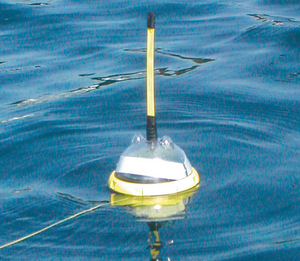Security
-
See advice
Regulations
Standard ISO 9650 Life raft
This international standard has been in force since 2005 and covers all rafts of recreational craft of less than 24m in length. Two types of raft are regulated by this standard: coastal ISO 9650-II and the high seas ISO-9650-1.
ISO 9650 type II rafts.
Type II rafts are adapted to coastal navigation. They are less robust than the type I but more lightweight. They are designed to inflate at a temperature of between 0 ° C and 65 ° C. The bottom of the raft is simple and of standard strength. They are designed for mild weather.
ISO 9650 type I raft
This category is divided into two classes; A and B. The class A is stronger than the class B. There are also differences in inflation temperature a -
See advice
Regulations
The regulations imposed for navigation of less than 2miles from shelter, are individual equipment (vest or jacket,) of 50 Newtons. You will not find them in our guide (except special dinghy vest.) For sailing between 2 and 6 miles, the regulations require 100 Newton models. For this zone the harness and lanyard are not obligatory. Beyond 6 miles, it will be better to replace 150 Newton foam vests, with inflatable life jackets. This is the type of equipment one purchases for themselves and which serves one well when travelling on different vessels.Salt pellet or hydrostatic?
-
See advice
Make the right choice
 A number of solutions are possible when one considers the GPS, the autonomy and the type of beacon.
A number of solutions are possible when one considers the GPS, the autonomy and the type of beacon.
In the satellite distress beacon range one finds the EPIRB (Emergency Position Indicating Radio Beacon,) and the PLB (Personal Locator Beacon.)
The EPIRB are the largest. They are connected to a boat and float. The personal beacons are the smallest. They do not float but function even on land.
The localisation of the beacon is assured by satellite. It is sometimes necessary to use several satellites to do this precisely (more time.) If the beacon is equipped with GPS it can send its -
See advice
Surpass the regulations
The regulations require a fire extinguisher for every habitable 20 m2. For a motor compartment, one may use a remote control model. Ideally, install an extinguisher per cabin. Always think about the accessibility of the fire extinguisher after the fire has started. For the galley, it is prudent to double up with a fire blanket.Act quickly
The speed of response is paramount ,especially as the operating time of a fire extinguisher is very brief. Count on 6 seconds for a model of 1 kg, for a 2 kg model on 8 to 10 seconds and 25 seconds for a 6 kg. All models have the same trigger system. Do not wait until a fire starts to read the manual. -
See advice
The regulations
Less than 2 miles
No flares
Coastal 2 to 6 miles
1 set of 3 SOLAS approved hand flares
Offshore, more than 6 miles
1 set of 3 SOLAS approved hand flares
3 SOLAS approved parachute flares
2 SOLAS approved smoke cannisters
(Flares and smoke are not mandatory if the boat is equipped with VHF DSC coupled with a GPS.)Go beyond the regulations
Less than 2 miles from shelter no flares are obligatory. Do though, take at least 3 hand flares, a small investment that may prove useful to indicate distress. Between 2 to 6 miles, it is advisable to move toward a kit identical to
